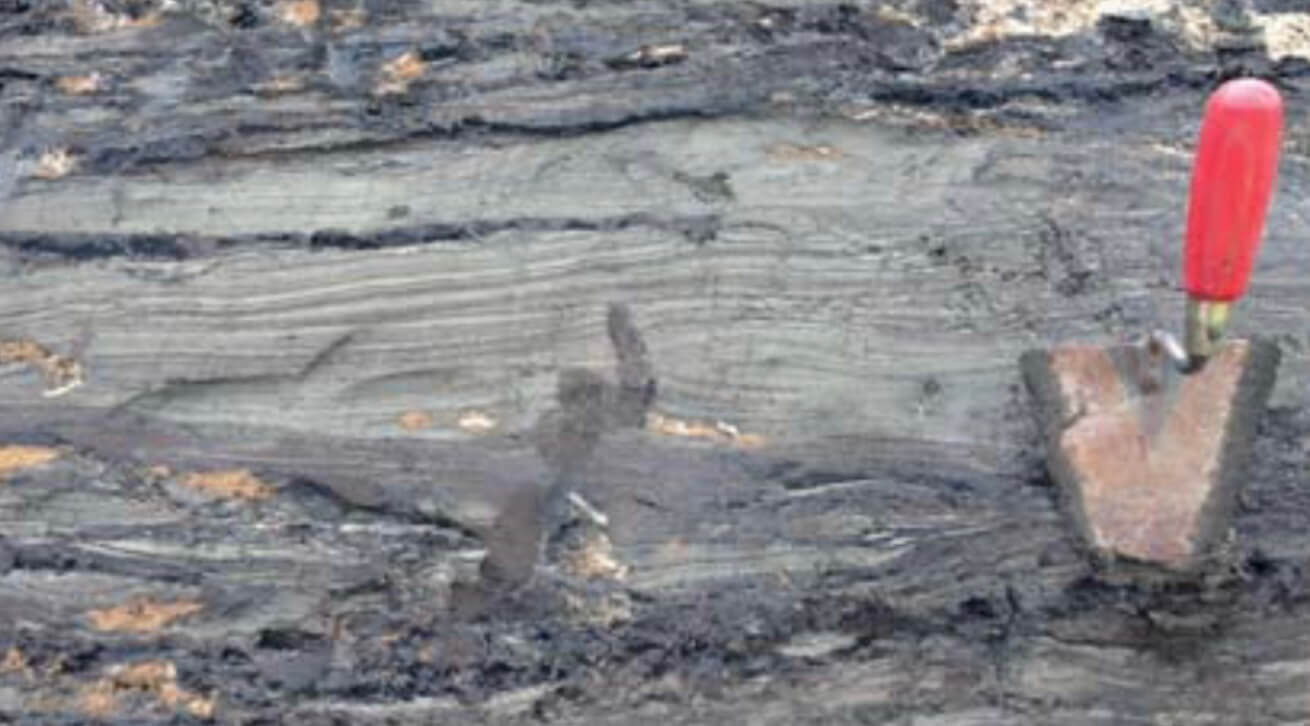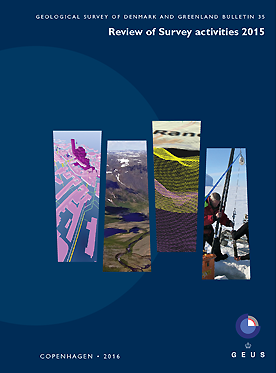
How to Cite
Share
Abstract
A motorway was constructed in 2010–2016 through the suburbs of the city of Silkeborg (Fig. 1). The Danish Road Directorate wished to climate-proof the motorway against adverse future climate changes. The directorate collaborated with the Geological Survey of Denmark and Greenland (GEUS) to study the hydrological conditions. Studies of historical and projected climate-change-driven variations in groundwater levels in relation to urbanised hydrological fluxes were conducted by Kidmose et al. (2013, 2015). During the construction of the motorway, Miocene and Quaternary deposits were exposed in the slopes of the Gudenå valley and late-glacial glaciofluvial deposits were found in the valley floor. This paper focuses on the Miocene sediments and their influence on the local hydrological conditions.
At Silkeborg the Gudenå valley is c. 35 m deep (Fig. 1). The surrounding terrain is a till plain. In the slope of the valley, glaciofluvial sand is found below the till. Miocene deposits are found below the glaciofluvial sand. The floor of the Gudenå valley is covered by c. 15 m thick glaciofluvial deposits, which rest on Miocene deposits. In borehole no. DGU 87.907 49 m of Miocene deposits belonging to the Vejle Fjord Formation are recorded, consisting primarily of marine clay with minor occurrences of sandy deposits. About 12 km south of Silkeborg lower Miocene deposits are seen in outcrops and boreholes (Fig. 2). Here the fluvial Addit Member of the Billund Formation (Rasmussen et al. 2010) is separated from the underlying marine Vejle Fjord Formation by a sharp erosional contact (Rasmussen 2014).
How to Cite
Share
Downloads
Editors Adam A. Garde, Ole Bennike, Kristine Thrane and W. Stuart Watt
This issue of Review of Survey Activities presents a selection of 24 papers reflecting the wide spectrum of current activities of the Geological Survey of Denmark and Greenland, from the microscopic to the plate-tectonic level.
The Survey’s activities in Denmark are illustrated [...]










